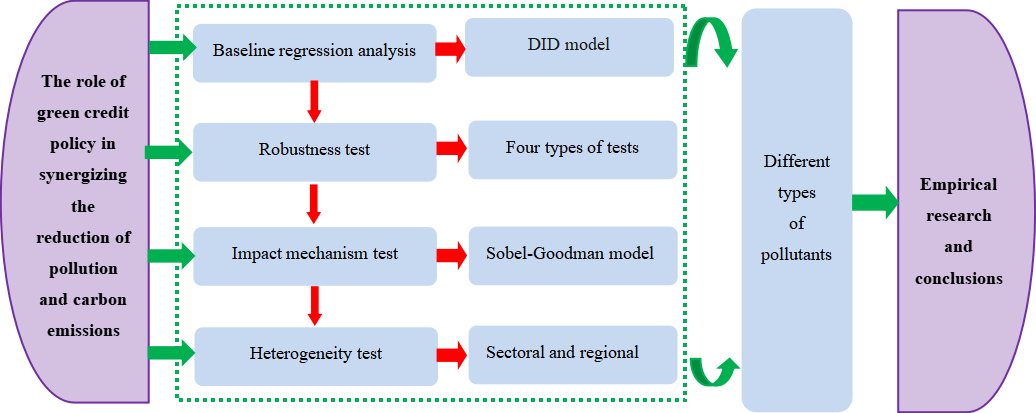
Numerous discussions have taken place regarding the influence of the green credit policy (GCP) on carbon and pollution reduction. However, there is a dearth of research on synergizing the reduction of pollution and carbon emissions (SRPC). This paper aims to investigate the potential of GCP to achieve SRPC by analyzing the Green Credit Guidelines implemented in China. Firstly, the findings reveal that GCP significantly contributes to SRPC by upgrading the industrial structure and optimizing energy consumption. However, the promotion of SRPC through technological innovation is deemed ineffective. Additionally, the impact of GCP on SRPC is more prominent in the industrial sector, while it bears no significant influence on the household sector. Lastly, GCP demonstrates success in achieving SRPC in terms of waste gas and common industrial solid waste, but falls short when it comes to wastewater and hazardous waste. This research paper provides a theoretical foundation for GCP to effectively realize SRPC and offers insights to further enhance the policy framework of green finance in China.
Total file downloads: 27